Lower Body Plyometrics for Swimmers
 By: Eric McGinnis, CSCSDirector of SSP Swim
By: Eric McGinnis, CSCSDirector of SSP Swim
Rollins College Strength & Conditioning Coach
Sports Performance SpecialistSpectrum Sports Performance
Explosiveness is fundamental to all sports, including swimming. There are a lot of training elements to consider when trying to develop power in an athlete. One of the most important ways to develop power output is by directly performing EXPLOSIVE movements. Although this seems like it would be common sense, coaches often either overlook or underestimate the importance of reinforcing explosiveness through training on land. In this program I am going to discuss how to utilize and implement lower body plyometrics into a strength and conditioning program for swimmers.
What are Plyometrics?
Plyometrics are often referred to as jump training, but can potentially be utilized for the upper body as well (more on that in another blog). The goal of using plyometrics is to improve the elastic properties of the muscle in order to create a faster, more powerful contraction.
Why are Plyometrics Important for Swimmers?
Plyometrics are important for all athletes because speed is always a key component to sport. For swimmers, a faster start and turn is an obvious reason for training lower body explosiveness. Plyometrics are not just for sprinters, however. Speed may not be as crucial to a distance swimmer as it is to a 50 freestyler, but even distance swimmers gain an advantage if they can get more distance than their competitors off of each wall. If you look at the best distance swimmers in the world, most of them have incredibly efficient turns as well as distance per stroke. Both of these qualities are an example of explosiveness, just displayed over a much longer period of time than a sprinter.
Equipment:
All you need is a pair of shoes. I am going to assume that most teams will be doing their plyometric program on the pool deck. Performing repetitive jump exercises barefoot is not recommended due to the stress it could put on the athlete’s joints. Swimmers in particular are not use to a high level of impact, so we want to be cautious.
Linear Lower Body PlyometricsPreparatory Movement
Drop Squat
Single Leg Drop Squat
Single Leg
Hop
Bound
Double Leg
Squat Jump
Broad Jump
Lateral Lower Body PlyometricPreparatory Movement
Lateral Drop Squat
Single Leg Drop Squat 1-1 (1 foot to the other)
Single Leg
Lateral Bound
Double Leg
Lateral Squat Jump
Rotational Lower Body PlyometricsPreparatory Movement
Rotational Drop Squat
Single Leg Rotational Drop Squat
Single Leg
Rotational Hop
Double Leg
Rotational Squat Jump
Progressions:
Each exercise listed above has three different progressions. The progressions are very simple once you understand them. They are as follows:
Non-Countermovement (NCM)
If the exercise is listed as non-countermovement, or NCM, this means the jump begins from a pre-loaded position. In other words, the athlete will start from a quarter squat position and will have to remain stable here for at least two seconds before they start their jump. It’s important when performing NCM jumps that once the athlete loads, their next movement must be moving in the direction they intend to go. No extra lowering or arm swinging can be performed once in the loaded position.
Counter-Movement (CM)
A counter-movement jump (CM) begins in a fully extended position with arm in the air. When the athlete is ready to jump, he/she will simultaneously swing their arms down and bend their legs, loading for a more explosive jump. The goal here is to load fast and then re-extend as quickly as possible, spending as little amount of time as possible in the loaded position.
Continuous (Cont.)
A continuous jump begins exactly like a countermovement jump. The only difference is that all prescribed repetitions will be performed consecutively with as little amount of time on the ground (between jumps) as possible.
The Program:
This plyometric program will be performed twice per week just like the strength and core program. You can pick whether or not you want to do it on the same day as your strength program or on the off days in between. However, the plyos must ALWAYS be the first part of training for that day (after a thorough warm-up of course).
Progressing the Program
Each day of your plyometric program will focus on one of the three main categories: Linear, Lateral, or Rotational. Within each category you will perform both preparatory movements, one of the double leg movements, and one single leg movement, on each day of the program. Since there are three categories and only two training days per week, we will rotate through them in three-week cycles so that you can perform each category twice within three weeks. Every three weeks, you will progress from NCM to CM to Continuous. Sound confusing? A visual might help. Here’s what it will look like.
Week 1:Day 1: Linear – NCM
Drop Squat
Single Leg Drop Squat
Squat Jump
Hop
Day 2: Lateral – NCM
Lateral Drop Squat
Single Leg Drop Squat 1-1
Lateral Squat Jump
Lateral Bound
Week 2:Day 1: Rotational – NCM
Rotational Drop Squat
Single Leg Rotational Drop Squat
Rotational Squat Jump
Rotational Hop
Day 2: Linear – NCM
Drop Squat
Single Leg Drop Squat 1-1
Broad Jump
Bound
Week 3:Day 1: Lateral – NCM
Lateral Drop Squat
Single Leg Drop Squat 1-1
Lateral Squat Jump
Lateral Bound
Day 2: Rotational – NCM
Rotational Drop Squat
Single Leg Rotational Drop Squat
Rotational Squat Jump
Rotational Hop
As you can see, these first three weeks fall into the non-countermovement (NCM) phase. The following three weeks will look exactly the same but will instead be performed with a countermovement. The final three weeks will be continuous. My advice is to align this nine-week program so that it ends right before taper begins. You don’t have to stop doing plyometrics completely during taper, but I would recommend reducing the weekly volume by at least 50% to focus on being explosive while allowing the athlete to still recover.
Volume (Sets and Reps)
The sets and reps scheme for this program is very simple. For preparatory movements (drop squat variations), perform just 1 set of 3 repetitions during each training session. For your actual jumps, perform 2 sets of 3-5 repetitions the first time on each workout within each phase, and 3 sets of 3-5 repetitions the second time through a workout within each phase. The upper end of the repetition scale should be reserved for your more experienced athletes. Keep the beginners around sets of 3 reps.
Exercise Descriptions:
It’s important to understand that the drop squats mimic both the loading positions as well as the landing positions of all of our plyometrics. The technique you should enforce on a drop squat should also be enforced on a squat jump both during takeoff and landing. Remember, the phase of your training cycle (NCM, CM, Cont.) dictates whether you start loaded or extended on your jumps. This is why I didn’t include starting positions in the descriptions. Just make sure you adjust your start positions accordingly and ALWAYS make your athletes land in a stable position that looks like the drop squat they will practice.
The goal of a drop squat is to practice loading into an athletic position. Start with your arms straight up in the air and your feet hip width apart. Forcefully pull your arms down while simultaneously retracting your hips back behind you and bending your knees. You should be in a about a quarter squat position with a neutral spine and your weight centered at the middle of your feet. Make sure you are loaded into your glutes and hamstrings in this position. A good way to make sure of that is to not allow your knees to come forward past your toes. Toes should always be pointed straight ahead.
The single leg drop squat is exactly like the drop squat but performed on one leg at a time. Begin by standing on your right foot with arms up in the air. Forcefully pull down into an athletic stance that mimics the regular drop squat but with you left foot hovering just 2 inches off the ground. Repeat on the other foot.
A lateral drop squat starts just as any other drop squat. You will begin on both feet, fully extended. However, when you pull down, you will shift your weight to one side. The proper position of a lateral drop squat should look exactly like a regular drop squat but with the hips shift to one side. The athlete should not dip a shoulder, change their foot position, or rotate in any way. Make sure to perform repetitions on both sides.
Single Leg Drop Squat 1-1 (1 foot to the other)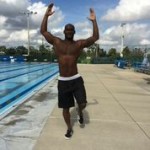
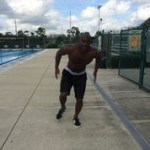
Start fully extended on your right foot just as you did for the single leg drop squat. This time, however, when you pull down, you are going to change your loaded leg from right to left. On the next repetition, you will start on your left foot and drop your right foot.
Rotational Drop Squat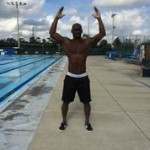
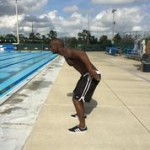
[clear}
Begin on both legs in a fully extended position. As you begin to load, simultaneously rotate 90 degrees to your right. You should land in an athletic stance equivalent to a regular drop squat position but facing 90 degrees to the right of where you started. On your next rep, drop and rotated 90 degrees to the left.
Single Leg Rotational Drop Squat
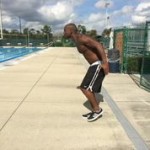
[clear}
This is exactly like the regular single leg drop squat but with the added rotational component of the rotational drop squat. Start extended on your right leg. Pull down and rotate 90 degrees to your right. You should land on your right leg with your left foot hovering off the ground, facing 90 degrees to the right of where you started. Stand back up on your right leg again, then drop and rotate back to your left. Then repeat both left and right rotations on the left leg.
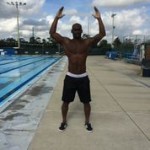
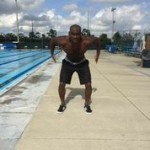
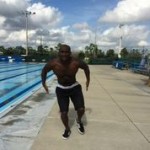
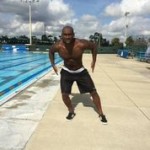
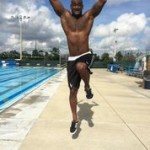
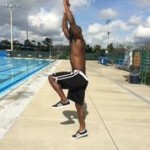
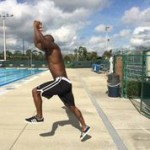
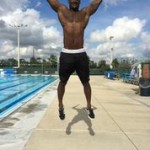
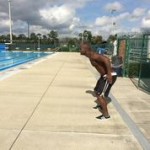
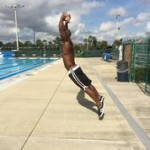
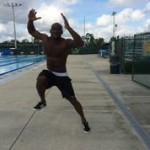
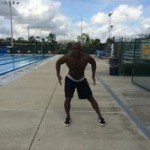
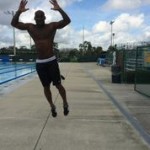
Leave a Reply